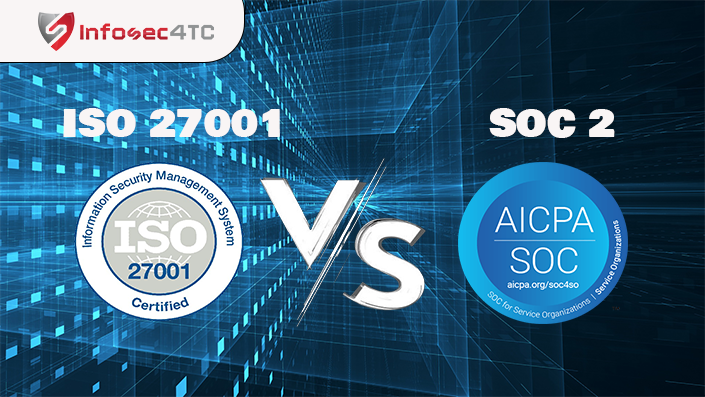In the vast ocean of cybersecurity, where threats lurk behind every click and data breaches are all too common, two lighthouses stand out for guiding organizations towards safer shores: ISO 27001 and SOC 2. These standards are not just badges of honor; they are comprehensive frameworks that, when implemented correctly, can significantly bolster an organization’s information security posture. Understanding the nuances, applications, and benefits of each can empower businesses to make informed decisions about their cybersecurity strategies. This article explores both standards in detail, offering a comparative analysis to help organizations navigate the compliance maze.
ISO 27001: Setting the Global Standard for Information Security
ISO 27001 is part of the ISO/IEC 27000 family of standards, which are designed to help organizations secure their information assets. It provides a framework for an Information Security Management System (ISMS), enabling organizations to manage the security of assets such as financial information, intellectual property, employee details, and information entrusted by third parties.
Key Features:
- Global Recognition: ISO 27001 is internationally recognized and applicable across all sectors and businesses, making it a versatile standard for global operations.
- Risk-Based Approach: It mandates organizations to assess the risk to their information assets and implement appropriate controls to mitigate these risks.
- Continuous Improvement: The standard encourages an ongoing process of review and improvement, ensuring that the ISMS evolves with changing threats.
Benefits:
- Demonstrates a commitment to information security to customers, partners, and stakeholders.
- Helps comply with legal, regulatory, and contractual requirements.
- Provides a competitive edge in the marketplace.
SOC 2: Tailoring Compliance to Service Organizations
Developed by the American Institute of CPAs (AICPA), SOC 2 is specifically designed for service providers storing customer data in the cloud. Unlike ISO 27001, which is applicable to any organization, SOC 2 is tailored to the needs of IT and cloud services, making it particularly relevant in today’s digital-first business environment.
Key Features:
- Five Trust Service Principles: SOC 2 reports are based on the security, availability, processing integrity, confidentiality, and privacy of customer data.
- Customizable Framework: The standard allows organizations to select the principles that are relevant to their business, providing a customized approach to compliance.
- U.S. Focus: While SOC 2 is recognized globally, it is particularly relevant for U.S.-based or U.S.-focused companies due to its alignment with American standards and expectations.
Benefits:
- Enhances trust with clients, especially those in the U.S. market.
- Demonstrates adherence to high standards for handling data.
- Offers a competitive advantage, particularly for cloud-based service providers.
ISO 27001 vs. SOC 2: Choosing the Right Path
Deciding whether ISO 27001 or SOC 2 is more suitable for your organization depends on several factors, including your business model, the nature of the data you handle, and your market focus. Here’s a simplified guide to help you choose:
- Global Operations vs. U.S. Market: If your organization operates globally and needs a universally recognized standard, ISO 27001 is the way to go. If your focus is primarily on the U.S. market, especially if you’re a service provider dealing with sensitive customer data, SOC 2 might be more appropriate.
- Industry Requirements: Some industries may favor one standard over the other. It’s crucial to understand the specific compliance requirements and expectations in your sector.
- Customer Expectations: Listen to your customers. Sometimes, the decision is influenced by the compliance standards your customers expect or require from their vendors.
Combining ISO 27001 and SOC 2
For many organizations, the question is not whether to choose ISO 27001 or SOC 2, but how to integrate both into their compliance and security strategies. Pursuing both certifications can provide comprehensive coverage, showcasing a commitment to security that addresses both global standards and specific principles relevant to service organizations.

